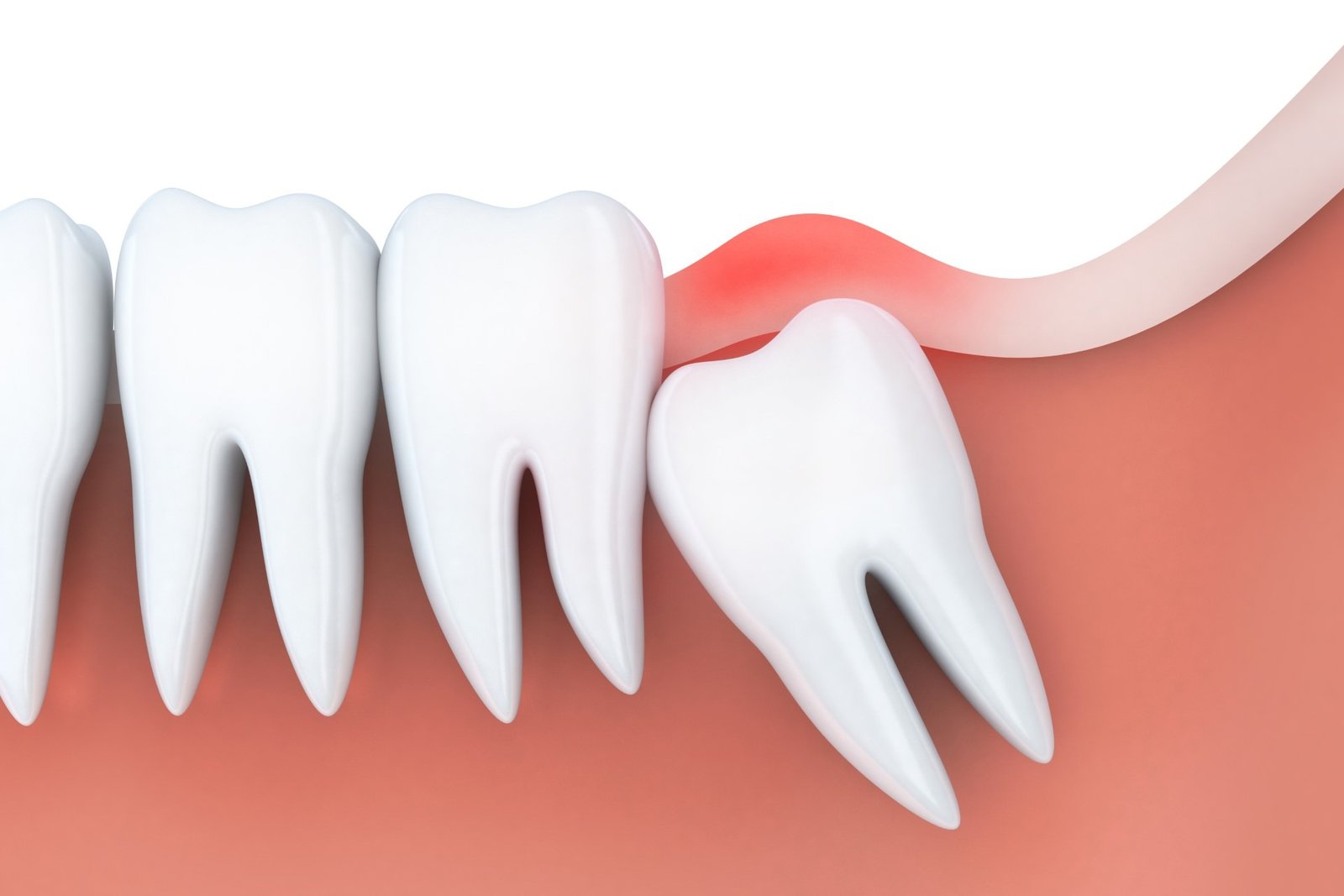Wisdom teeth, or third molars, are the last set of teeth to emerge, usually appearing between the ages of 17 and 25. While some people experience no issues, others face pain, crowding, or infection that requires extraction. Knowing when to remove wisdom teeth can save you from future dental complications and discomfort.
Understanding Wisdom Teeth
Wisdom teeth are remnants from our ancestors, who needed them for grinding tough foods. Today, with softer diets and smaller jaws, many people simply don’t have enough room for these extra teeth.
Signs Wisdom Teeth Should Be Removed
1. Pain or Discomfort
Ongoing pain at the back of your mouth is one of the clearest signs. This can result from the teeth pushing against others, or from infections around partially erupted teeth.
2. Impacted Wisdom Teeth
When wisdom teeth don’t have enough room to emerge, they can become impacted — trapped beneath the gum or jawbone.
Types of Impaction
- Vertical impaction – tooth grows straight but can’t fully erupt
- Horizontal impaction – tooth grows sideways
- Angular impaction – tooth grows at an angle toward or away from other teeth
3. Gum Infections (Pericoronitis)
Partially erupted wisdom teeth can trap food and bacteria under the gum, leading to infection, swelling, and bad breath.
4. Damage to Nearby Teeth
If a wisdom tooth pushes against the second molar, it can cause tooth decay, root damage, or alignment issues.
5. Tooth Crowding
Wisdom teeth may cause your other teeth to shift out of place, especially if you’ve had orthodontic work.
When Wisdom Teeth Can Stay
Not all wisdom teeth need removal. If they:
- Are fully erupted
- Are positioned correctly
- Are healthy and cavity-free
- Cause no pain or crowding
…then your dentist may recommend leaving them alone but monitoring them regularly.
Best Age to Remove Wisdom Teeth
Younger Adults Heal Faster
Dentists often recommend removing problematic wisdom teeth between 18–25 years old. At this age, roots are not fully developed, making extraction easier and recovery faster.
Risks of Waiting Too Long
- More complex surgery due to fully formed roots
- Increased risk of nerve damage
- Slower healing time
How Wisdom Teeth Are Removed
Simple Extraction
For fully erupted teeth, a dentist can remove them under local anaesthesia.
Surgical Extraction
For impacted teeth, an oral surgeon may need to cut into the gum or bone. This is usually done under local or general anaesthesia.
Recovery After Wisdom Tooth Removal
Typical Healing Timeline
- First 24 hours: Blood clot forms, swelling starts
- 2–3 days: Peak swelling, pain starts to ease
- 1 week: Stitches (if any) removed
- 2 weeks: Full recovery for most patients
Aftercare Tips
- Apply ice packs to reduce swelling
- Eat soft foods (soups, mashed potatoes, smoothies)
- Avoid smoking and alcohol
- Keep your mouth clean but avoid vigorous rinsing for 24 hours
FAQs About Wisdom Tooth Removal
Q1: How do I know if my wisdom teeth need removal?
See your dentist if you experience pain, swelling, gum infections, or shifting teeth. X-rays can confirm if removal is necessary.
Q2: Is it better to remove all wisdom teeth at once?
Yes, if they’re all likely to cause problems. This avoids multiple surgeries and recovery periods.
Q3: How long does the procedure take?
Simple extractions take 20–40 minutes; surgical removals can take longer.
Q4: Can I work the day after wisdom tooth removal?
It’s best to take at least 1–2 days off to rest and recover.
Q5: What happens if I don’t remove impacted wisdom teeth?
They may cause infections, cysts, damage to nearby teeth, and misalignment over time.
Conclusion
Wisdom teeth should be removed if they cause pain, infection, crowding, or are impacted. The ideal time for extraction is during young adulthood, when healing is quicker and complications are fewer. If you’re unsure whether your wisdom teeth need removal, book a dental examination — early assessment can save you from bigger problems in the future.


